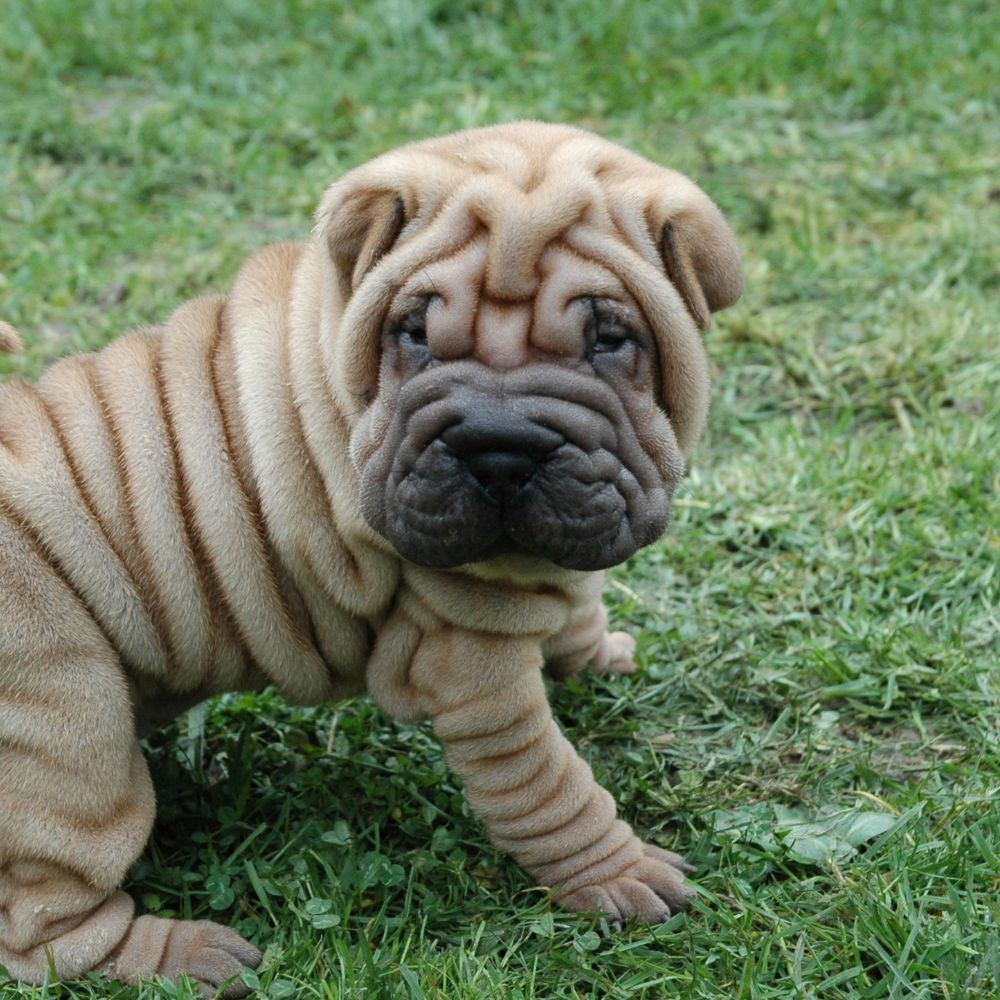Quick Facts about the Shar Pei
- Origin: China
- Weight: 18–30 kg
- Life expectancy: 8–12 years
- Coat Colour: Fawn, red, black, cream, chocolate, blue, lilac (solid colours preferred)
- Breed Group: Non-Sporting / Companion
The Shar Pei is a unique Chinese breed known for its deeply wrinkled skin, blue-black tongue, and dignified, independent personality. With a compact, powerful body and calm disposition, it’s a loyal guardian with ancient roots.
Shar Pei History
The Shar Pei originates from southern China and dates back over 2,000 years. It was traditionally used as a farm dog—guarding property, herding livestock, and occasionally used in dog fighting due to its loose, hard-to-grip skin.
The breed nearly went extinct during the Communist Revolution but was revived thanks to a small group of breeders and international interest. It was introduced to the U.S. in the 1970s and recognised by the AKC in 1992.

Shar Pei Temperament
Calm, reserved, and independent, the Shar Pei is naturally suspicious of strangers but deeply devoted to its family. It tends to form strong bonds with one or two people and does not thrive on excessive affection or constant attention.
While intelligent, Shar Peis can be stubborn and aloof. Early socialisation and consistent, calm leadership are critical to prevent reactivity or territorial behaviour.
Note: This breed is not a social butterfly—it values peace, routine, and respect.
Health and wellness
Shar Peis need moderate daily activity—walks, structured play, and light training are sufficient. They enjoy routines and quiet environments but still require mental stimulation.
Their short, bristly coat sheds minimally but requires attention to skin folds, which must be kept dry and clean to prevent infections.
Significant problems:
Shar Pei fever (periodic fever syndrome)
Entropion (eyelid rolling inwards)
Hip dysplasia
Skin fold dermatitis
Hypothyroidism
Life expectancy: 8–12 years

The Complete Guide to Shar Pei
🔍 Looking to go deeper into dog training?
Use these categories to explore targeted guides and articles on canine behavior, nutrition, obedience, entertainment, and more.









